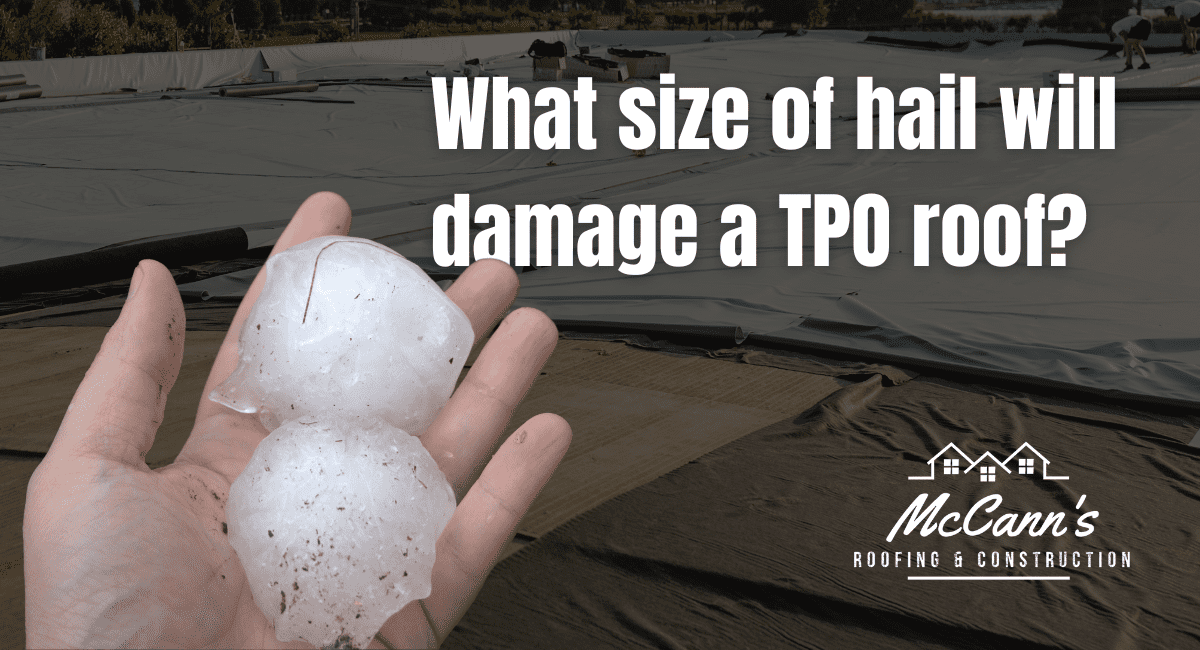Hail damage is a function of the hail stone’s diameter and the roof’s height, known as the pitch. The lower the pitch, the more likely you are to have damage from hailstones.
If you expect hail or high winds, an additional feature on your insurance policy can help protect your assets. It’s called an endorsement and adds extra coverage to your policy.
If you have a TPO roof and expect your region to experience hail or high winds, ask your insurance agent about this additional coverage. An endorsement can add peace of mind to your policy and help protect your assets from unexpected damage sustained from hailstorms.
It depends on the hail’s size and the roof’s pitch. A larger hailstone striking a lower-pitch roof is more likely to cause damage than a smaller hailstone hitting a higher-pitch roof.
Two factors affect how likely it is that a TPO roof will be damaged by hail:
- The size of the hail stones.
- The pitch of the TPO roof.
It depends on the hail size and its impact.
If a hailstone hits the top of your head, you will experience pain. The same goes for a TPO roof. If a 2-inch diameter hail stone impacts your roof, it might dent your roof, damage the sheets, or even penetrate the roof deck below.
A dent in your TPO roof is not dangerous, but it will create an ugly view. It will also decrease the efficiency of your roof by trapping heat in the attic space.
